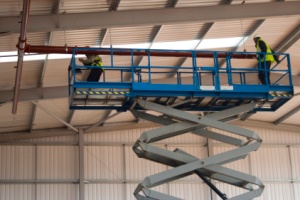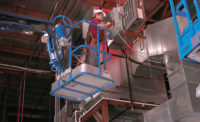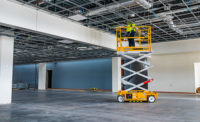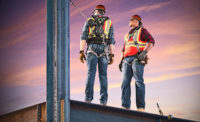 In response to a letter requesting compliance assistance concerning the use of seat belts on powered industrial trucks and the use of fall protection on scissors lifts, OSHA formally stated:
In response to a letter requesting compliance assistance concerning the use of seat belts on powered industrial trucks and the use of fall protection on scissors lifts, OSHA formally stated:
National consensus standard ASME B56.1-1993, Safety Standard for Low Lift and High Lift Trucks, requires manufacturers to provide, and operators to wear operator restraint systems.
OSHA does not currently have a specific standard requiring the use of an operator restraint system.
However, the use of operator restraint systems is enforced through Section 5(a)(1) of the Occupational Safety and Health Act, which requires that each employer furnish to each of his employees employment and a place of employment which are free from recognized hazards that are causing or likely to cause death or serious physical harm to his employees.
In addition, the proposed revision to the powered industrial truck operator training standard requires employers to train all operators in operating instructions, warnings, or precautions listed in the operator's manual, such as the use of operator restraint systems.
Please be advised that OSHA has not made any exclusions regarding the use of operator restraint systems.
With regard to whether fall protection is required for scissor lifts, please be advised that a guardrail system is required for employee fall protection on scissor lifts.
When the use of a guardrail system is infeasible, the employer must provide an appropriate alternative fall protection such as personal fall protection systems.
As you are aware, OSHA does not have specific standards addressing scissor lifts.
For additional information regarding scissor lift safety, please refer to national consensus standards' ANSI/SAIA A92.3-2006 (R2014), Manually Propelled Elevating Aerial Platforms, and ANSI/SIA A92.6, Self Propelled Elevating Work Platforms.
What fall protection is required for scissor lifts?



